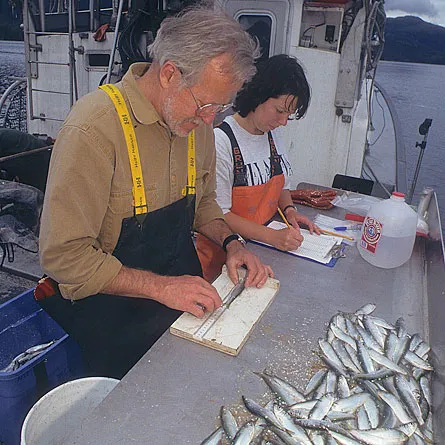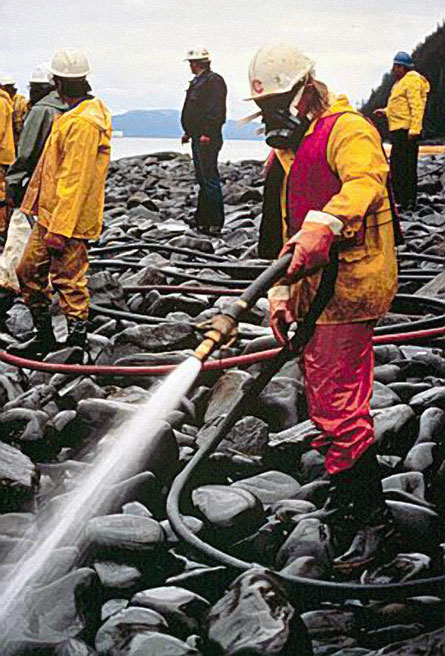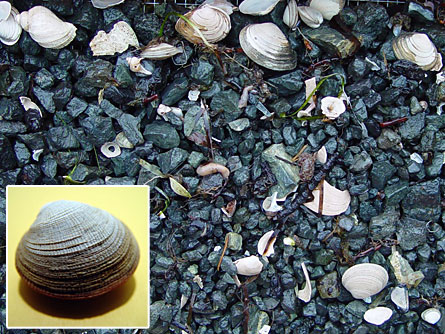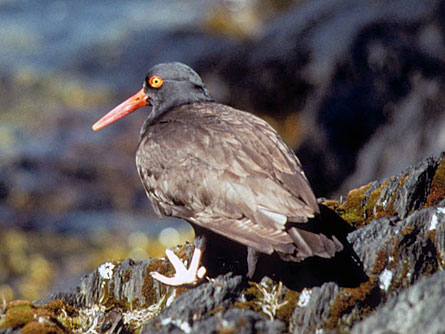Exxon Valdez: Tidal waters still troubled
Immediately following the Exxon Valdez oil spill, 20 years ago, environmental scientists were recruited to evaluate damage to ecosystems in and around Alaska’s Prince William Sound. And almost all describe being initially struck by a pall that had descended over normally raucous, vibrant marine communities.




Today the noise has returned and many populations of wildlife that were initially devastated by oil have recovered. These include bald eagles, harbor seals, common loons and river otters. But not all critters rebounded — and often for reasons that remain unknown.
It started with nearly 11 million gallons of spilled crude oil. It created a black blanket of smelly goo that stuck to everything. On islands just downstream of the spill, recalls Michael Fry, one of those scientists, waves sloshed a foot-thick layer of oil onto rocks, which would get sucked down between boulders and cobble. Any animals caught in the oil’s path also picked up a jacket of oil, notes this research physiologist, who was then with the University of California-Davis (and now with the American Bird Conservancy).
It was hard to count the dead, he says, “because as we’d walk along the beaches it was difficult to tell oiled birds from oiled rocks.” Marbled murrelets, he notes, are shore birds that are no bigger than a chipmunk — “and on beaches looked just like oiled cobblestone.”
About three days after the tanker’s initial grounding, a winter storm hit. It ravaged southern Alaska, sometimes with 70-knot winds. Afterward, even upper branches on some coastal trees were coated with North Slope crude oil.
Strange as this three-dimensional world of oil was, what most struck chemist Jeffrey Short (then with the National Oceanic and Atmospheric Administation and now with Oceana) was the accompanying quiet. Like when he and his colleagues arrived at Smith Island shortly after that first storm died down. “We could see the south shore of the island had been just utterly clobbered,” he remembers. Being spring, “you’d normally hear seagulls or birds in the woods. But there was just deathly quiet.
“It creeped us out.”
Consulting marine ecologist Dennis Lees was hired by Exxon to study intertidal inhabitants. He too was surprised by the scale of oily death. Some mussel beds lost up to 40 percent of their shellfish. And for all appearances, rockweed — a ubiquitous brown seaweed— “was toast,” he says. But within a few months, this alga started budding new growths. “We were quite impressed,” he says. Life was proving resilient.
Parboiling intertidal species
But Exxon wanted to remove the oily residues that still blackened many beaches. So it brought in high-pressure hot-water sprayers to scour the rocks, cobble, and sand. This water “was really hot,” Lees says — at least 60 °Celsius, “which is warmer than any animal or plant in that area can tolerate. So they were basically parboiled.”
It was these spray patrols that did the most damage to intertidal life, he now suspects. Tidal hardscape once covered with rockweed was now “bare rock,” he says. “We began complaining about this to Exxon,” at which point, he recalls, Exxon “decided we were no longer on their team,”
In 2002, Lees made his last trip to check on how intertidal zones had weathered the intervening years. And some problems persisted. For instance, in terms of clams, even just three to four years after the spill, oiled beaches that had not been washed “were basically indistinguishable from sites that had never been oiled.” However, on later visits the marine ecologist found that “sites that were oiled and pressure-washed had only about one-third as many hard shell clams as did the sites that had been heavily oiled but not washed.”
Lees, who directs Littoral Ecological & Environmental Services of Leucadia, Calif., is currently preparing a paper to describe the tidal-habitat destruction that he now thinks accounts for the clams’ poor recovery.
Over time, small rocks, sand and other beach materials become interlaced. Almost like shingles on a roof, they begin to overlap into a fairly stable, protective surface. Even big waves can crash down without moving such layered materials.
Clams slammed
In such an environment, Lees explains, a larval clam, mussel or other critter can settle in, relying on the neighboring anchored rocks as armor. It was this armor that the power washing dislodged and destabilized, he says. “And the time it will take for the organization of that armor to become reestablished appears to be very long,” he says. Based on admittedly “very skimpy data,” he told me that “we predict the recovery of those clam beds could take anywhere from 50 to 100 years.”
Poor clam recovery is something that Gary Shigenaka has also noticed. This marine biologist with NOAA in Seattle noted that in 2007 his team went to Prince William Sound to check on the recovery of its clams. “And we had a hard time finding any.”
Sea otters could be over-clamming, he concedes. If shellfish were already hurting in parts of Prince William Sound because of oil, otters might have been able to finish off most of those that remained.
Then again, hard shell clams are now suffering declines from the Puget Sound area of Washington up through Canada and into Alaska. Which immediately raised the question for Shigenaka: Is this part of the trend that his team has witnessed in the lower 48 and that seems to be affecting British Columbia? Which might be some bacterial infection. He notes that “there’s also some indication of ocean acidification having impacts in near-shore area clams.” With all of these possibilities, he says federal scientists are “interested in trying to do some forensics up there [in Alaska] to figure out what’s going on with those clams.”
Some birds and fish still suffer
Some birds that feed in the tidal zone, such as pigeon guillemots, also haven’t recovered since the accident. They weren’t doing that well before the spill, which knocked off at least 10 percent of those in Prince William Sound — an estimated 2,000 to 6,000 birds. And at least through 1999, liver enzymes associated with hydrocarbon exposures were elevated in adult members of the species, suggesting that the invertebrates they were picking up from the intertidal zone might be a continuing source of exposure to oil.
The Exxon Valdez Oil Spill Trustee Council, which is dispersing company funds for environmental remediation efforts, concluded in its just-released 2009 Status Report that “recovery of some seabird populations is likely affected by the depressed herring population.”
Pacific herring is a species that spawns in the intertidal and subtidal portions of Prince William Sound. The youngest year class exposed to the spill appears to have been hit hard, notes Short. Subsequent year classes have not rebounded. Today, this species — a primary prey for scores of other fish and birds — remains at only 20 to 30 percent of what its population was before the spill, he notes.
Of course, Short concedes, the spill may not fully explain the herring’s inability to rebound from what had been “very high densities just prior to the crash.” First, the herring suffered an initial infectious epidemic, which some researchers have speculated might have been due to compromised immunity in fish that survived the spill. But whatever the initial cause of the herring crash, questions persist about why a rebound hasn’t occurred.
What these and other reports in this series emphasize is how vulnerable many species are to catastrophic spills of oil. And that should give us pause before embracing expanded oil trafficking through other fragile environments. Such as the Arctic.






